CLIMATE CHANGE IN TIBET: ALL GOOD?
You may have heard rumours that the climate of Tibet is warming remarkably fast, and this is dangerous.
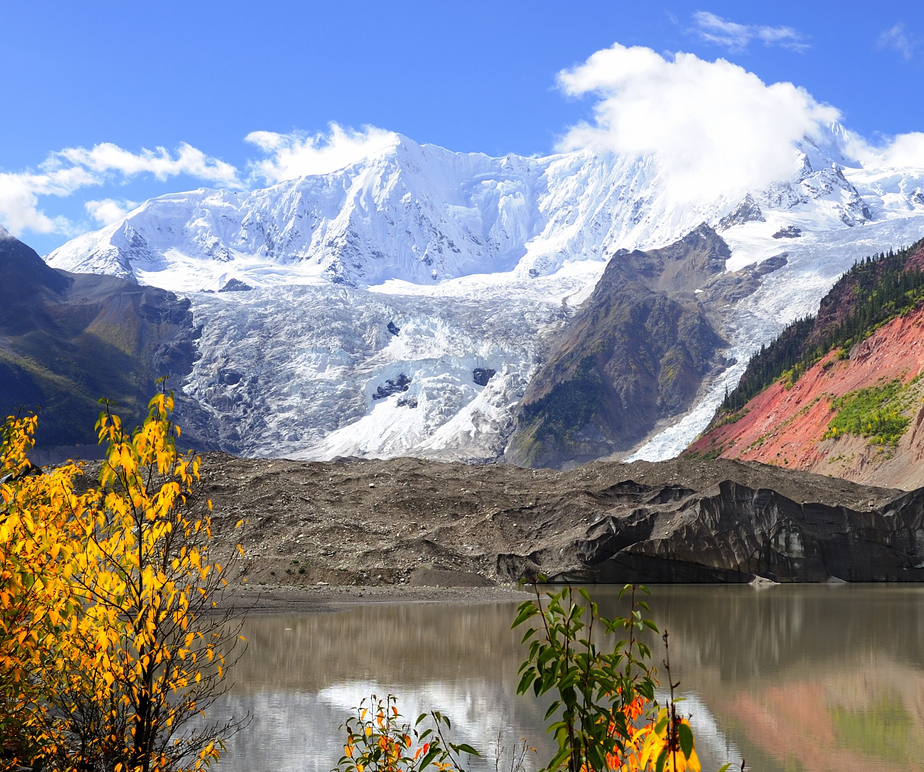
China’s official media, however, assure us that climate change in Tibet is all good, even that it contributes to the construction of ecological civilisation. There is nothing to worry about if Tibet warms, and eventually becomes suitable for Chinese crops and Chinese settlement.
The alarmists point to the melting of the glaciers, the shrinking of permafrost, the loss of wetlands, the widespread flooding in Tibet in 2018, as danger signs.
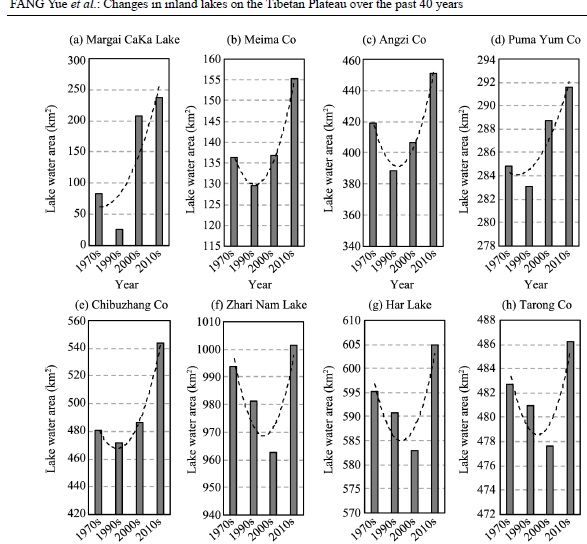
But the upside is more rain, lakes brimming full, and that means more water for the uppermost catchments of China’s great rivers, so it’s all good.[1] Further, China is making progress with geoengineering even more rainfall over the river sources, rather than letting monsoon clouds drift further inland into the remotest pastures, such a waste. What matters most is that lowland China is provided with more water from Tibet. Climate change plus geoengineering plus remote monitoring by big data satellites all add up, in official eyes, to a dividend, not at all a reason for alarm.
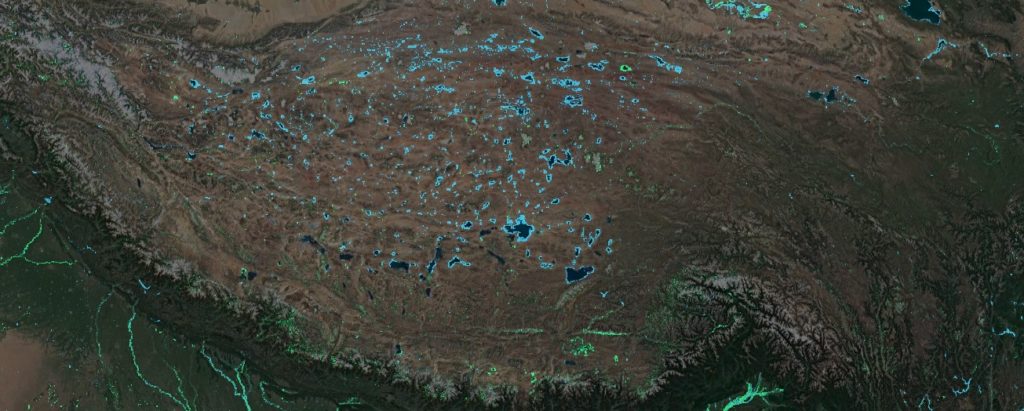
These days the alarmists include the Intergovernmental Panel on Climate Change (IPCC) which in early August 2019 reported that climate change is accelerating in Tibet, and that official policies aren’t helping. Further, the removal of livestock production from the traditional Tibetan pastoral landscapes, on a very broad scale, is the wrong move in a world where food security for billions of people is precarious.
The IPCC’s alarm was amplified by reports by International Campaign for Tibet and Minority Rights Group, which identified China’s policy failures on the rangelands and their consequences, which drive rural Tibetans deeper into poverty and insecurity, as herd size limits are enforced, or nomads are removed altogether to urban settlements.
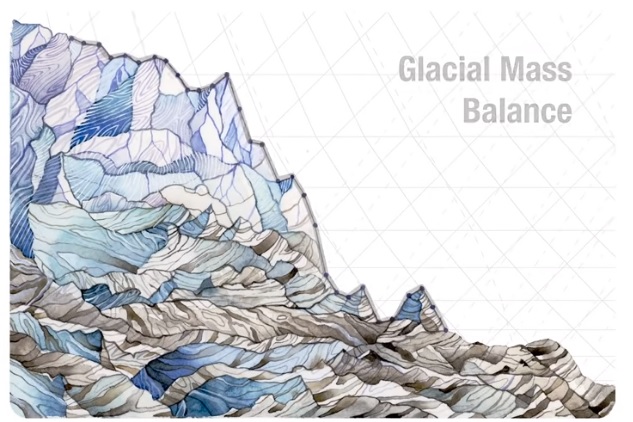
CLIMATE CHANGE IS GOOD NEWS
No need, we are now told by China’s official media, to be gloomy; in fact it’s all good: “The wild animals in the Sanjiangyuan area are frequent, the lake area in the Qaidam Basin continues to expand, the water body area of Qinghai Lake has increased for 17 consecutive years, and the grassland ecosystem in the Qinghai area of Qilian Mountain National Park has been improved. All this marks the ecological indicators of Qinghai Province; it is good.”
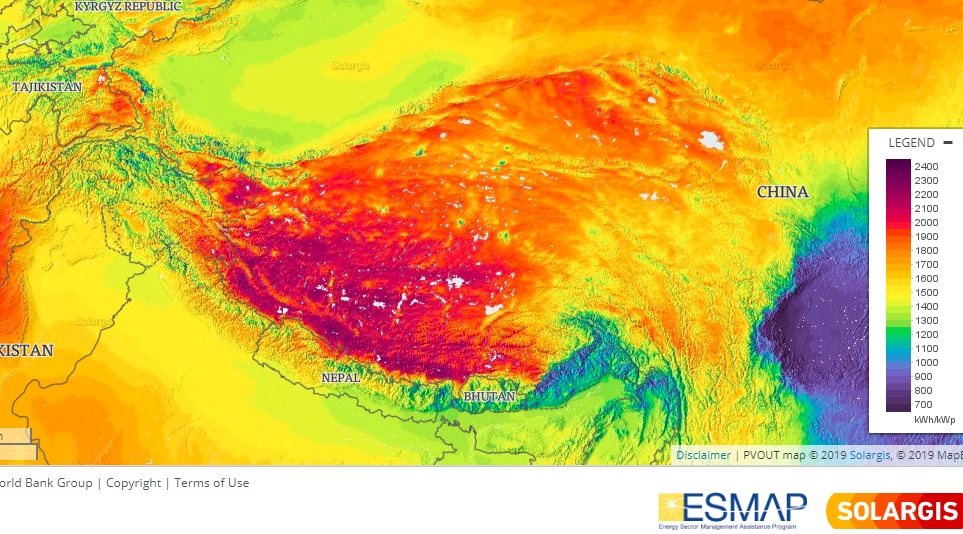
Climate change, especially in Tibet, actually has its upside, transforming a cryosphere into landscapes that are becoming recognisable from a Chinese lowland perspective: capable of supporting more forest and eventually more cropping land; capable of delivering water reliably, over a lengthening wet season, to the lowlands; capable of generating massive amounts of hydropower, wind power and solar power, all of which can be transmitted great distances to the coastal factories on ultra-high voltage power grids. It’s all good.
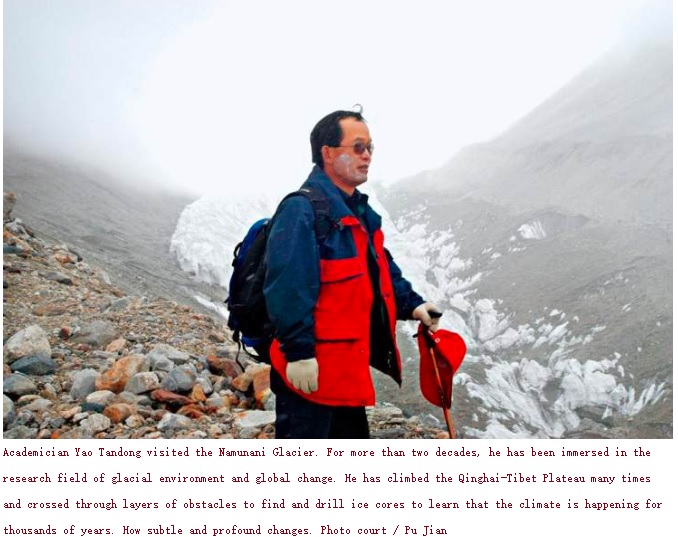
Climate change in Tibet, viewed Sinocentrically, is actually a dividend, especially in the provisioning of water, both from glacier melt and from climate change induced rainfall increase, to be further enhanced by blasting Tibetan skies with rockets laden with silver iodide in the hope of enhancing rainfall even further, in the Yellow River catchment, for downstream benefit. It’s all good.
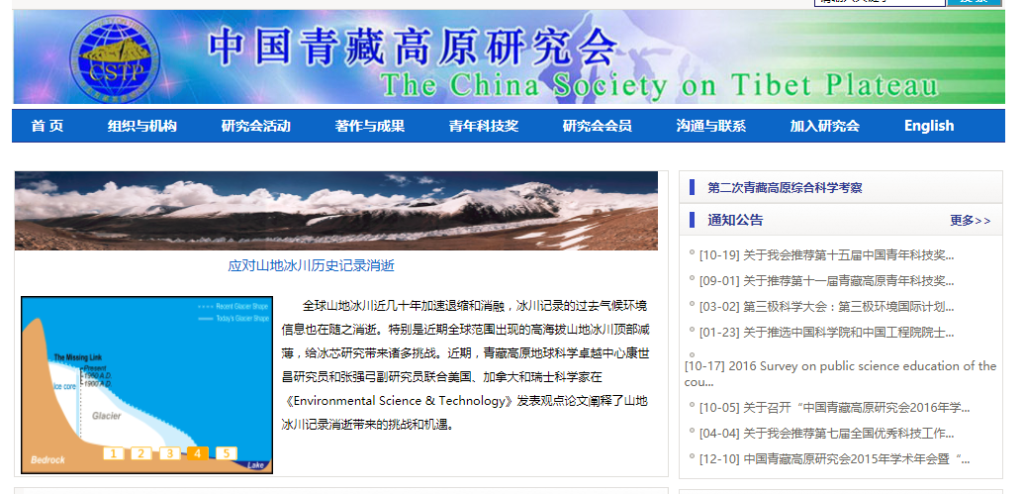
In the long term, the glaciers will be gone altogether, and the dividend will become a deficit. But that seems to be several decades away. Around the world, many would like to believe China’s planners think in decades, but the loss of the glaciers is for them far over the horizon, too far; while the dividend is now. In recent years there was considerable uncertainty as to whether melting glaciers were generating increasing runoff, with several scientific studies a decade ago suggesting that, counterintuitively, runoff was decreasing. More recently the Chinese Academy of Sciences has put a big effort into quantifying glacier melt and hydrological data on streamflows; it looks good.
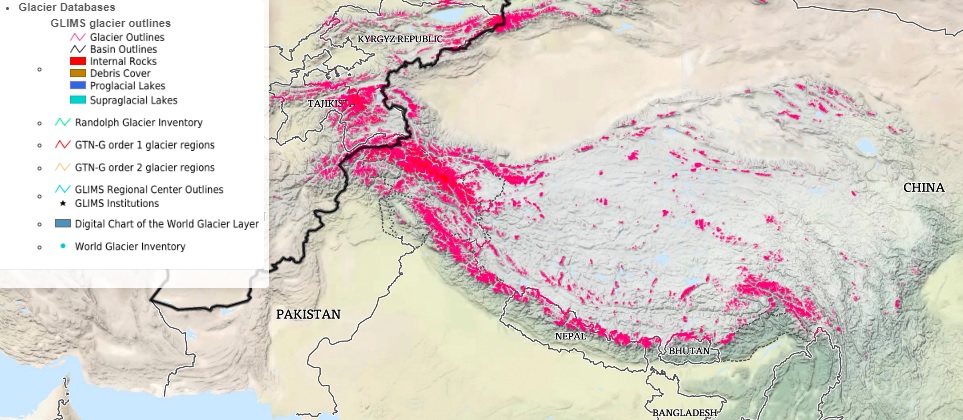
EXTREMES ARE NOW MORE EXTREME
This dividend is seldom spoken of openly; it doesn’t look good. Nor does China acknowledge that rapid warming, permafrost melt, glacier shrinkage, unseasonal snowstorms and heavy flooding across Tibet in 2018 are actually bad for Tibetan livelihoods, wildlife and ecosystems. The official Qinghai Scitech Weekly quoted above goes on, in the same article, to say: “In the winter of last year, there was snow in the pastoral area of southern Qinghai.” That is the only mention of the climate disasters in Tibet, where extreme weather events are becoming more extreme, as elsewhere worldwide.
The pastoral areas of southern Qinghai are bigger than the whole of Germany, and are prime pastoral landscapes, highly productive, but vulnerable to sudden and unpredictable extremes. A blizzard in early winter can block the high passes, as herds are being brought down to lower overwintering pasture. A blizzard in late winter can blanket the ground in snow so deep even yaks cannot paw through it, and delay the crucial grass growth timing of the beginning of spring, the time herd animals are weak after the long winter.
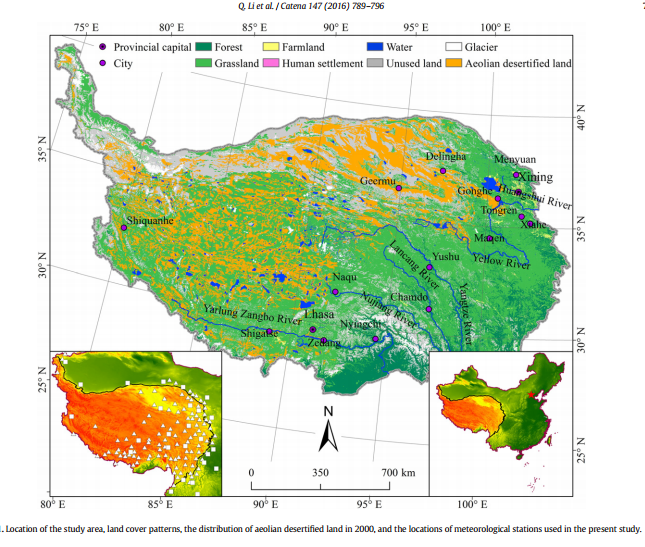
Extremes also mean prolonged dry spells, triggering desertification, for which drogpa nomads are usually blamed. It’s a complex picture: to what extent is desiccation/desertification a long-term process spanning centuries and millennia; to what extent is it now accelerating?
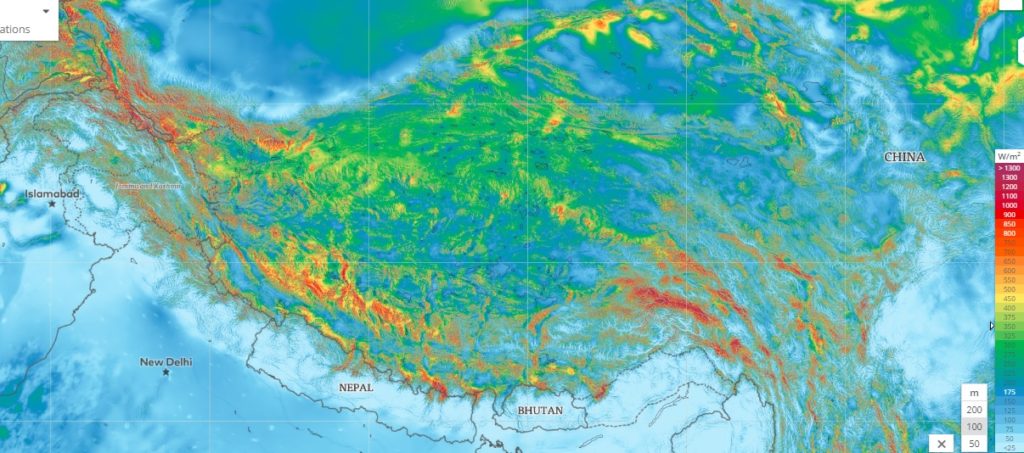
Further complexities arise when Chinese scientists try to track the seasonal thaw and refreezing of permafrost in huge portions of upper Tibet. When permafrost melts in the warmer months, or in the longer term, does this allow more water to seep deep rather than run off to the rivers and to downstream China? When permafrost freezes again, does this prevent water from trickling deeper, forcing it into the rivers? China, fixated by numbers, wants to know the answer, but generating enough data is not so easy.
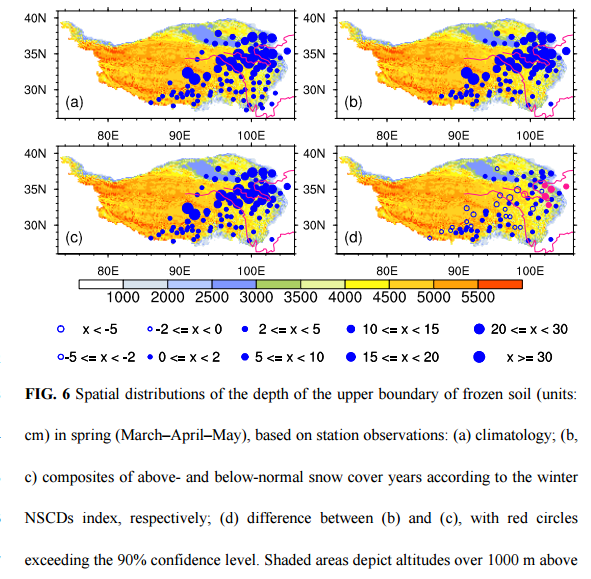
In nearby Mongolia, a free country with deep experience of mobile pastoralism, and of climate change, such extreme winters, known as dzud, can be mitigated by resolute collective action, co-ordinated by government, NGOs, local authorities and the herders themselves, activating the customary otor, a longhaul transfer of stranded stock to areas unaffected by disaster.[2]
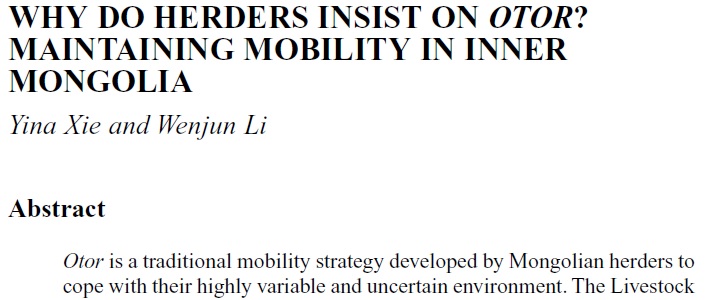
No such program exists in Tibet. Mongolia also pioneered indexed disaster insurance for pastoralists, carefully designed to pay out to nomads when they lose a lot of animals in an extreme weather disaster. No such indexed herd insurance exists in Tibet, even though Mongolia has shown it can be done without great expense.
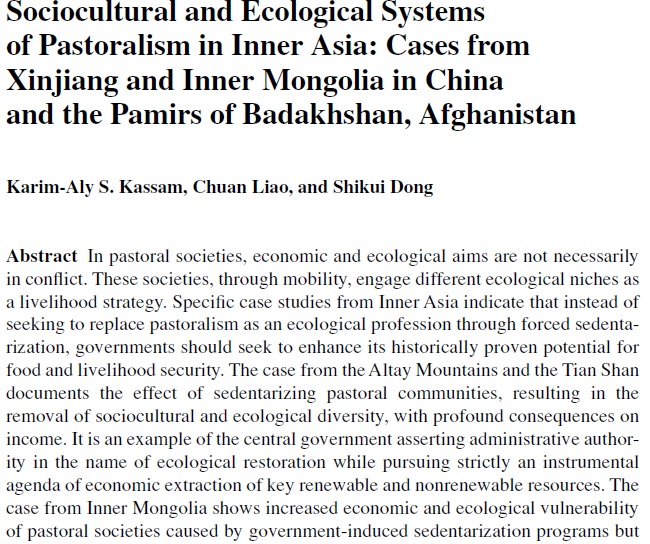
When disaster strikes, some Tibetan prefectures do now have reserve stockpiles of fodder as emergency relief, if it can be delivered to drogpa nomads on site. But the only way to rebuild a herd is to have as many animals as possible at all times, a customary logic Han Chinese consider irrational. From their perspective the purpose of having livestock, in any modern market economy, is to sell as many animals as possible for slaughter as soon as they attain maximum weight gain as they become adult.
Official China argues, plausibly, that excessive herd size puts too much pressure on available grass, yet it fails to provide the pastoralists with effective insurance that eases the anxiety that a small herd, and a blizzard, add up to immiserisation, and destitution. That means a one-way ticket to a distant concrete apartment block, on an urban fringe, for permanent resettlement, with land rights cancelled.
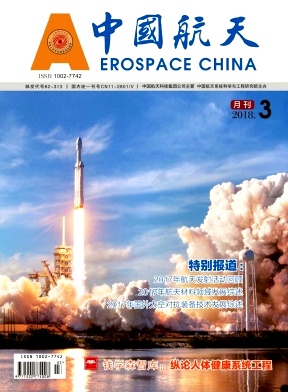
HI-TECH IS ALWAYS THE SOLUTION
But China does invest heavily in high-tech monitoring of climate, to keep track of all those overbrimming lakes and extra lakes, and in order to calculate the exact auspicious moment for firing up the rockets to blast silver iodide into the upper atmosphere of Tibet, to induce rainfall over the Yellow River catchment. Most of the Qinghai Scitech Weekly article is about the high tech:
“The Qinghai Ecological Weather Centre, established in 2018, consists of a centre, three platforms, and six major systems (ie Qinghai Ecological Meteorological Centre, ecological meteorological big data management platform, ecological meteorological service analysis platform, and ecological meteorological product release platform; business system, service system, technical system, science and technology support system, phantom security system, system standardisation system.) Through pre-construction, the role of ecological meteorological monitoring, early warning and assessment is more significant, and the comprehensive monitoring system for ecological meteorology is further optimized. Further enhanced, the ecological meteorological support standard system was basically established, laying a foundation for promoting the construction of Qinghai ecological civilization pioneer zone.”
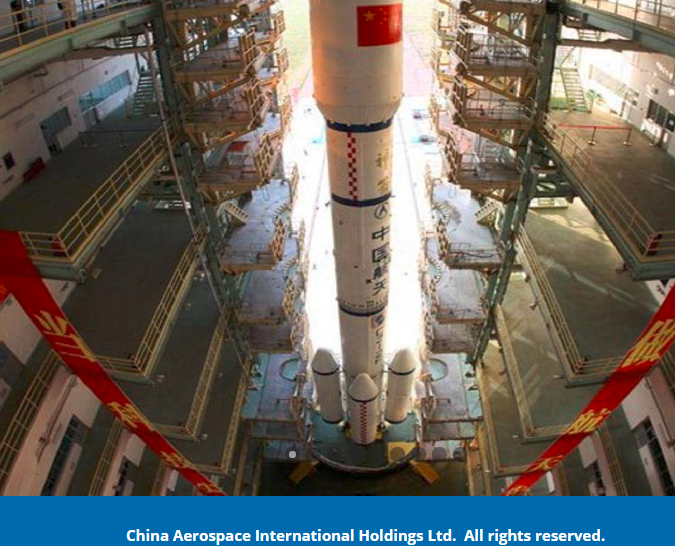
This impressive investment includes “weather radar, ground-based microwave radiometer, lightning location, GPS/MET water vapor remote sensing, airborne cloud particle measurement system, raindrop spectrometer, the comprehensive regional observation system consisting of automatic weather stations provides basic support for scientific monitoring and evaluation of high-altitude air resources in the province, effective identification of weather-activated data gathering and quantitative assessment of operational efficiency.”
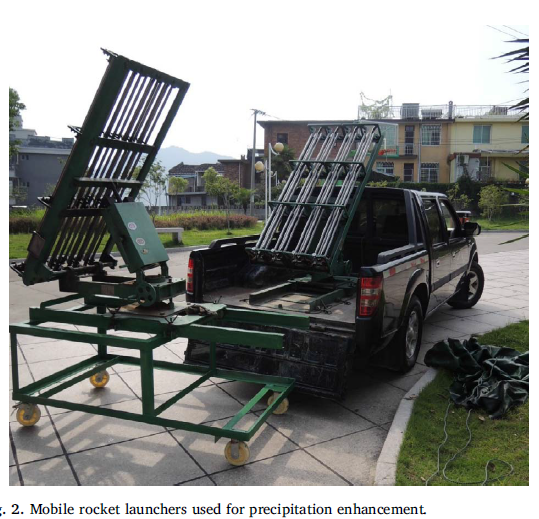
All this equipment, not only on the ground but on satellites equipped with many ways of monitoring the vastness of the Tibetan Plateau, is for the primary purpose of making more rain, where China wants it, rather than letting clouds drift by even further inland to Hoh Xil/Achen Gangyab UNESCO World Heritage area. Cloud seeding is the result of all this monitoring. The same article says: “Although it is in the ‘Chinese Water Tower’, the shortage of water resources has always been a ‘short board’ ‘短板’ that plagues the province’s economic and social development and ecological environment protection. The artificial rainfall enhancement operation is currently relatively mature and most effective. In recent years, the meteorological department of our province has continuously enhanced the capacity of ecological civilization to build meteorological support services through long-term ecological monitoring, strengthening scientific research, artificial rainfall enhancement, etc., and provided powerful meteorological support for the construction of ecological civilization in our province.” It’s all good.
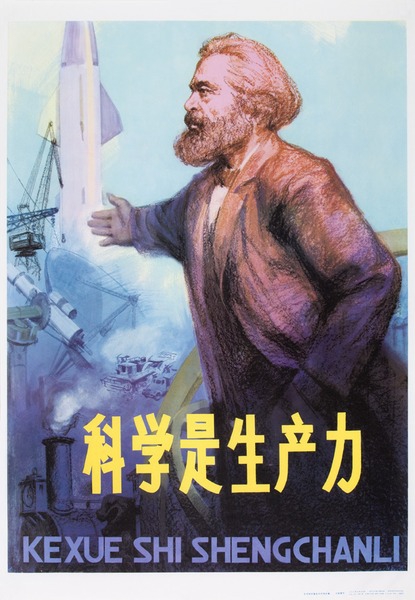
Climate change enhances the construction of ecological civilisation, a dividend that calls for rejoicing. Only worry-warts and snowflakes would see this march towards ecological civilisation as bad. Typically, International Campaign for Tibet, amplifying a major report from the Intergovernmental Panel on Climate Change, identified the many downsides of accelerating climate change in Tibet. So negative. Likewise, Minority Rights Group recently identified the negative impacts on Tibetan livelihoods of climate change. Some folks would complain, even at the gates of paradise.
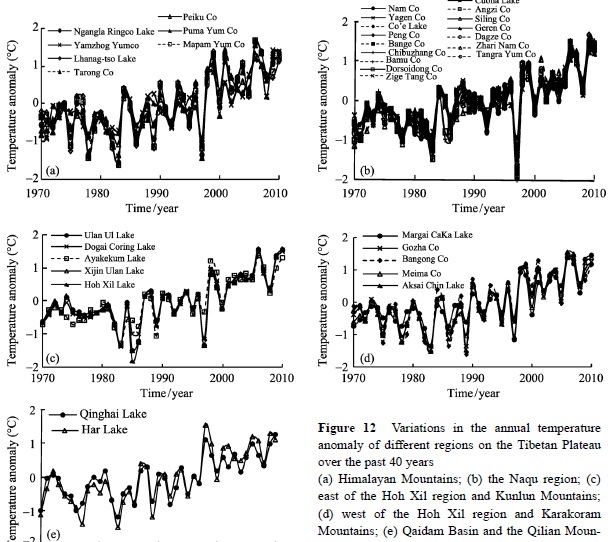
Since climate change, is all good, at least in Tibet –one quarter of China’s total territory- why not build more coal-fired power stations, to accelerate climate change further? China is doing just that: “Internationally, China has pledged to peak carbon emissions by 2030 at the latest, but it has been reluctant to promise an absolute cap on emissions. China’s carbon emissions are still increasing. China’s electricity demand has started to tick upwards again in the past few years. In response, the China Electric Power Planning & Engineering Institute, a research body, recently called for a short-term expansion of capacity over the next three years. Similarly, in March the China Electricity Council suggested that coal-power capacity should expand to 1,300 GW by 2030.” That’s a 30 per cent increase on current capacity.
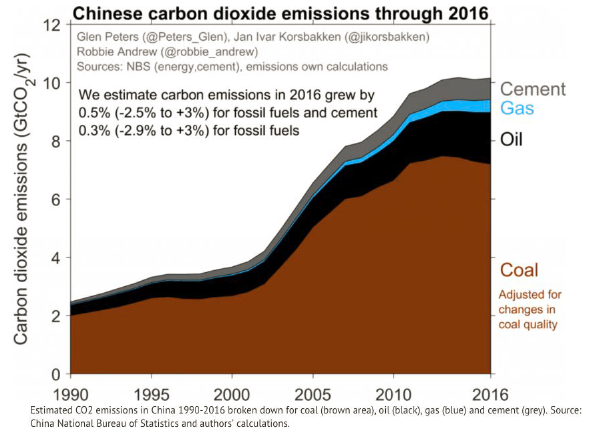
DON’T HOLD CHINA ACCOUNTABLE
After the IPCC warned in 2018 that anything beyond a 1.5 degree climate warming worldwide will be disastrous, the UN Secretary-General called for all countries to act to achieve that upper limit. Guterres specifically called for no more coal-fired power station construction after 2020. He was quickly repudiated by China, which persists in insisting that all the heavy lifting has to be done by the richest countries, leaving China free to burn ever more coal, for many years to come.
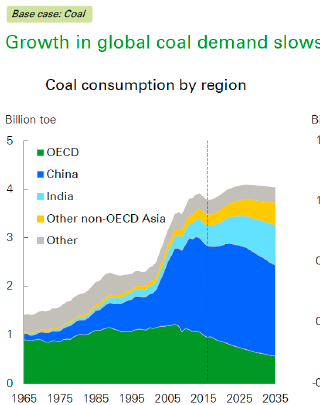
China’s rhetoric of constructing ecological civilisation looks all good, until you look more closely at what it means in practice. Many of China’s international partners know that if they are to have any chance of persuading China to pull its weight, they must slather China’s ecological civilisation construction with praise: “China can exert various kinds of international influence: leadership by example; leadership via resources such as knowledge and financial support; and leadership in coalitions and partnerships. Time is of the essence. Ecological civilization is an inspiring vision that will govern policies of many types in China’s New Era. However, it is a concept that is at an early stage of understanding in other countries and globally. Now is the time to introduce this important approach to the world with the aim of seeking synergies with global, regional and other national concepts and strategies of other countries in the interest of sustainable development. By securing full public participation regarding ecological civilization, the pathway to a Beautiful China can speak to our hearts as well as our minds.”
That’s the language of CCICED, the China Council for International Cooperation on Environment and Development, where leaders of Asian Development Bank, World Bank’s Global Environment Facility, UN Convention on Biodiversity, World Wildlife Fund, and The Nature Conservancy NGOs line up to praise China, in the hope of gently persuading it to ease up on the coal, even set some actual emissions limits. Little wonder the rest of the world gets the idea that China’s “ecological civilisation construction” means something good.
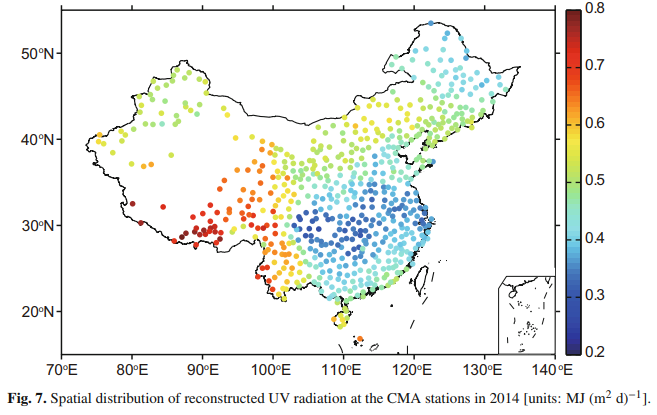
SETTING TIBET BACK BY A DECADE
In the actual world we live in, China persists in objecting to findings that pinpoint the most climate-toxic of emissions to China. The ozone hole over Tibet, which lets harmful ultraviolet radiation damage all living things in Tibet, is not shrinking, and much scientific research has identified the reason. Chinese factories manufacturing refrigerant chemicals and industrial foam sprays continue to pump into the atmosphere the deadliest of emissions, far more dangerous than carbon dioxide, which eventually gathers over Tibet, to the detriment of all life. Despite the evidence, China continues to deny this, or to take effective action.
While the UN calls for taking seriously the climate crisis, limiting warming to no more than 1.5 degrees, Chinese scientists say Tibet will warm by four degrees by century’s end. It is all good.
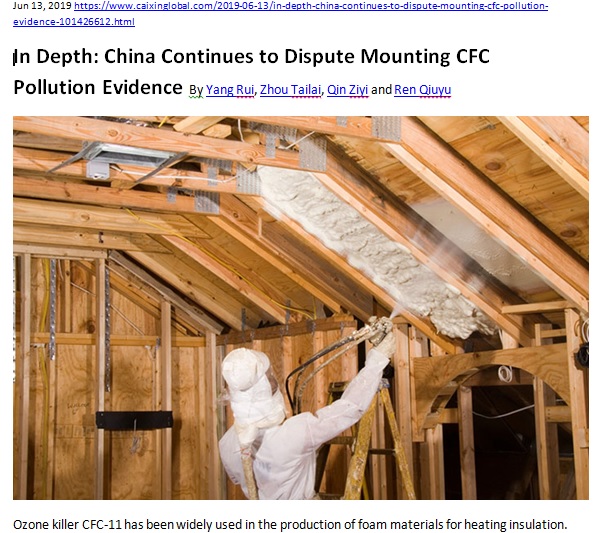
The Montreal Protocol, a UN treaty banning ozone depleting manufacture and emissions, is flouted, breaking international law. However, China’s experts quibble, saying the research pinning the blame on China is of dubious reliability, makes too many assumptions, has too little observational data to be certain. We recognise a familiar voice. For decades, the reality of climate change was denied by similarly attacking the scientific evidence as insufficient. The inherent assumption is that dangers that also make profits are not to be dealt with until totally proven.
But the ultraviolet hitting the surface of Tibet, unshielded by a protective ozone layer in the uppermost atmosphere, damages the DNA of all living beings, plants and animals. China’s failure to do anything much to find and close the polluters, in the words of scientists from the US National Aeronautics & Space Administration “could seriously undermine the protocol and set ozone repair back by nearly a decade.”
That’s a further decade of ultraviolet rays blasting Tibet, a prime cause of skin cancers; an extra decade of careless, pointless damage to life in Tibet, and no-one talks about it. Isn’t “ecological civilisation construction” meant to protect life, in tangible ways? Not all good.

TIBET: THE NEW STAIRWAY TO CAPITALIST HEAVEN
Is China’s passion for ruling distant Tibet by satellite just tech enthusiasm? Just a boyish belief in the latest gadgets that promise to govern Tibet, fire the cloud seeding rockets at just the right moment, all from a remote control room? Is that why China brushes aside concerns that climate change, ozone hole and geoengineering in Tibet might have downsides?
As usual, in today’s China, there’s all that, and more. It just so happens that in mid 2019 China launched a new stock exchange for the hi-tech corporations that make satellites and imaging equipment.

The July launch of the STAR Market, within the Shanghai Stock Exchange but with very different rules, made three new billionaires overnight on the day of launch. This is crony capitalism with CCP characteristics.
Timing is everything. Talking up China’s hi-tech unicorns to an IPO valuation astronomically in excess of their actual performance is a delicate art, if the sons of CCP bosses are to make their instant billions. The new Nasdaq-on-Yangtze had to achieve several carefully calibrated goals at once. There had to be excitement that hi-tech, especially satellites and their builders, is the wave of the future, a sure-fire investment guaranteed to be profitable. There had to be an unprecedented relaxation of stock trading rules allowing those spectacular valuations and speedy profit-taking; while shutting out mom and pop investors who stand to lose all when hyped stock prices deflate. If there are too many ordinary folk, who have little idea of the risks they are taking with their own money, who later get burned, that becomes a political problem for regime stability, so the STAR market ruled them out, while ruling the high roller insiders in.
It all worked, at least initially, so well there is now talk of the Shanghai STAR Market reducing China’s dependence on Hong Kong as a source of investment capital. Another plus. Made in China is suddenly producing star performers, whose corporate valuation vastly exceeds actual earnings.
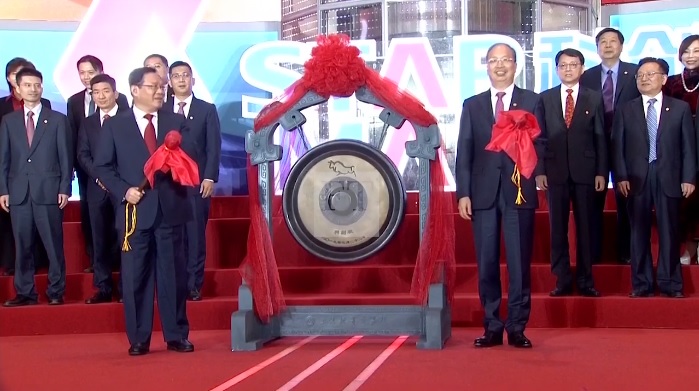
China’s state capitalism has pulled off a brilliant illusion. The 140 corporations listing their shares on the new Shanghai STAR market are state-owned, with all the backing of the party-state to guarantee they can never go broke, whatever happens, without a state bailout. Not only are the initial share sellers state-owned, so too are the initial share buyers, according to analysis by the Financial Times. It’s all a magical illusion.
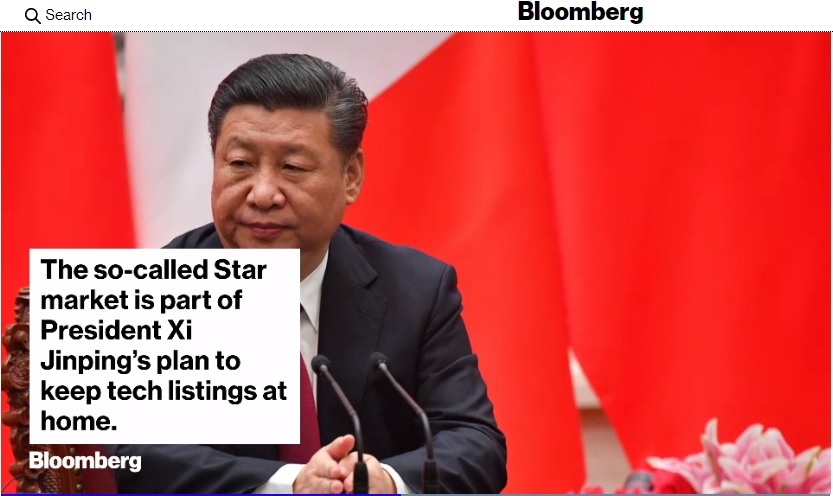
What has any of this got to do with Tibet? One of the state-owned corporations listing its shares for trading on the STAR Market is China Satcom, a profitable satellite builder and operator, a subsidiary of the state-owned giant CASC, China Aerospace Science & Technology Corporation. CASC is the core of China’s military-industrial complex, maker and launcher of missiles and commercial rockets, usually from the Jiuquan base in the desert of NW China, totally dependent on water from the Dola Ri mountains (Qilian Shan in Chinese) of northern Amdo.

CASC and China Satcom tell investors they don’t really need the money, since the state provides all, they are only in the market for capital because they were instructed to do so, to show blue chip stocks are now buyable. China Satcom, according to its voluminous regulatory filing with the Shanghai Stock Exchange, seeks only a modest RMB one billion capital raising. That’s reassuring.
Judging by the first batch of 25 corporations to complete their listings on the STAR Market, the remaining 115 applicants, including China Satcom, will fly. This is hardly surprising, since there is every indication that the party-state is behind it all, and even if all else fails, remains the guarantor. In fact, just to make sure the launch went well, the buyers as well as the sellers were frequently state-owned, a carefully orchestrated display of party-state confidence in itself.

If the STAR Market succeeds, China reduces its dependence on both the US and Hong Kong, advances its hi-tech Made in China 2025 plans for mastery of the industries of the future. The high throughput satellites China Satcom makes will turn Tibet into big data uploads and downloads, faster than ever. Xi Jinping, who announced the STAR Market in November 2018, has achieved the sort of win/win he often proposes.
And who will be the biggest winner? Who holds lots of shares already, likely to rocket in price when China Satcom IPO is completed? “Wen Yunsong, son of former Chinese Prime Minister Wen Jiabao, served as China Satcom’s chairman between 2012 and 2015 and then stayed on as a director until 2017.”
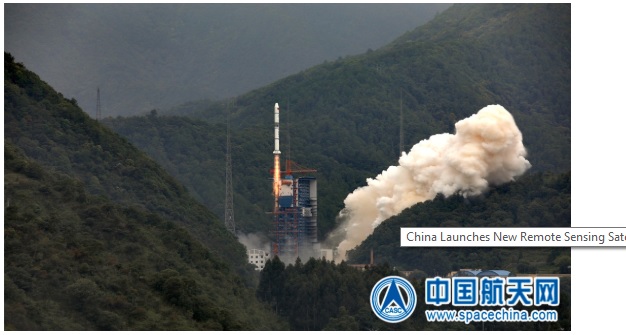
The younger Wen, sometimes known as Winston Wen, may soon join the instant billionaires from the first STAR listings: “’I woke up at 10am, and the share price had doubled,’ she said. ‘It definitely surpassed my expectations. It was money that came from the heavens without me doing anything.’ For Ms Xu, it is a moment for celebration. A handful of company presidents who have become instant billionaires are also in luck.”
Tibet is becoming an integral part of how to take money from the heavens, without doing anything. It’s all good
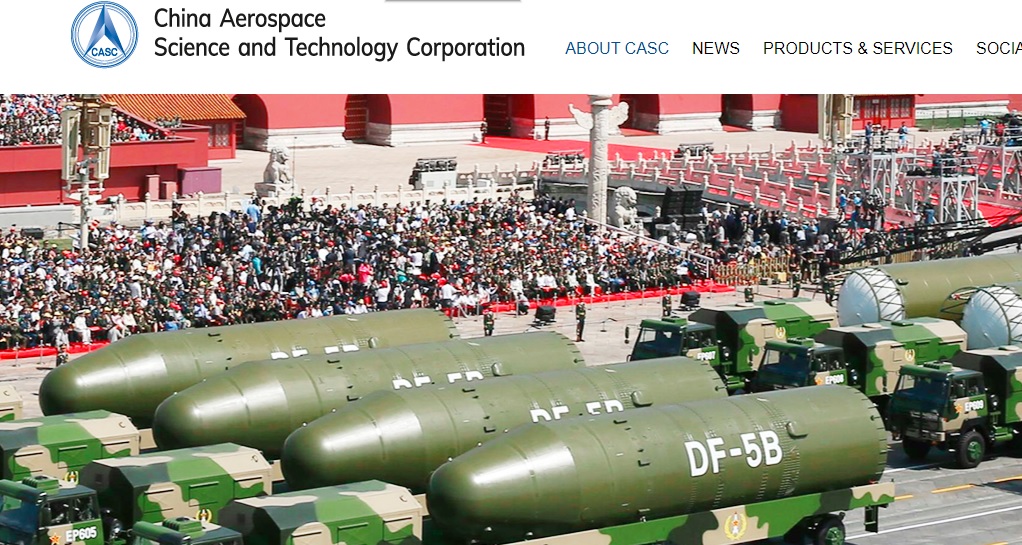
[1] FANG Yue, Changes in inland lakes on the Tibetan Plateau over the past 40 years, Journal of Geographic Science, J. Geogr. Sci. 2016, 26(4): 415-438
[2] Daniel Murphy, Disaster, Mobility, And The Moral Economy Of Exchange In Mongolian Pastoralism, Nomadic Peoples, 22 (2018): 304–329.